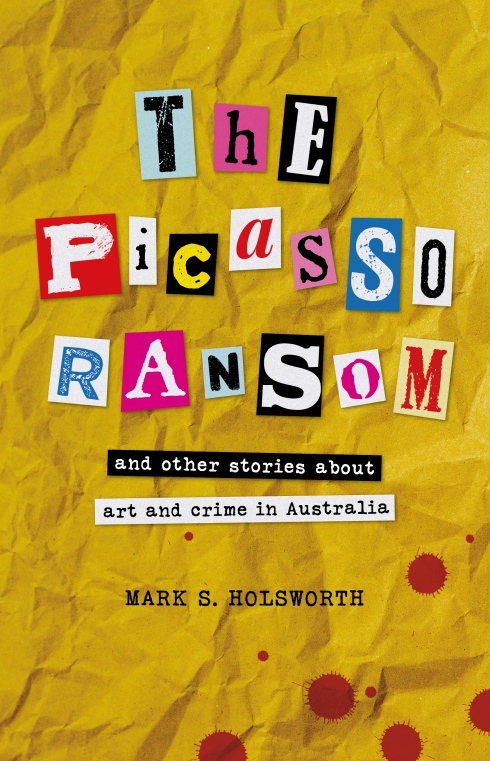Since April 4, 2016 I have been attending the Supreme Court to observe the trial of Peter Gant and Aman Siddique who were accused of forging two Brett Whiteley paintings. Last Friday Justice Croucher finally passed sentence. The jury verdict had been delivered months before, but the sentences had been delayed to hear plea hearings and applications for damages.
The trial of Aman Siddique and Peter Gant was itself is at a trivial crossroads in legal history as it is one of the last cases to be tried in the Supreme Court with the lawyers and judge wearing the traditional wigs. As of May 1, 2016 Supreme Court trials will no longer have the judge and barristers wearing wigs.
For most of the trial Justice Michael Croucher was wearing in his wig and red robes edged with silver. His tipstaff was dressed in the traditional uniform of a long grey coat with black brocade.
The venerable old defence barrister Remey Van De Weil, QC, who was representing Siddique, commented on the loss of wigs in his summing up to the jury. He noted that the wigs going back to the Sun King, Louis XIV of France. Mr Van De Weil used this historical point to emphasise this to the jury. “You are here to apply the principles of law, and that’s why we dress the way in which we do and it’s the only justification for it – believe me; I do not go to bed wearing these clothes, I don’t wear them around the house or certainly don’t wear them walking my dog.” He probably uses the same speech on all the juries.
Remey’s old wig looks like it is made out of horse hair, but the younger wigs in the courtroom are all made of nylon.
All the wigs were off for the sentencing.
On Friday Peter Gant, the art dealer who had sold the forgeries was sentenced to five years’ imprisonment, with a non-parole period of 2.5 years. Aman Siddique, the art restorer who painted the forgeries was sentenced to three years’ imprisonment, with an order for ten months to be served and 26 months suspended. There were several reasons for the difference in the sentences including that there was no proof that Siddique had received any money and because if Siddique served twelve months he would be deported from Australia, as he is not an Australian citizen.
The sentences were not a surprise to those watching the trial. The verdict will probably be overturned on appeal because there is evidence from a couple of witnesses that the two paintings in question existed in 1988.
For most of the time I sat with the large blue painting in its gilded frame known as “Blue Lavender Bay” resting on the padded seats just behind me on the press bench. The slightly smaller painting “Orange Lavender Bay” was further along.
I was not alone on the press bench. The other regulars observing the trial included, Bill Luke and the former arts reporter for The Age, Gabriella Coslovich were also both writing books. We were very occasionally joined by various journalists, generally, Pia Akerman for The Australian.
I have never observed a Supreme Court trial before but I have some experience with court reporting. (Read my blog post Are You Experienced?)
I have not been able to write about most of the trial because my blog allows comments and reporting on a jury trial with online comments risks contempt of court. I was not there for my blog but to work on my book about art and crime. I did find one exception and that was to write about the tagging on the press bench.


November 8th, 2016 at 11:05 AM
Very strange! Since Peter Gant, the art dealer who had sold the forgeries, got a longer sentence than Aman Siddique, the art restorer who painted the forgeries, we have to assume the court thought _selling forgeries_ was worse than _creating forgeries_. Perhaps the painter specifically told the dealer they were forgeries and therefore was not acting (as) criminally. If the dealer did not tell the potential buyers that the paintings were forgeries, Gant was the more criminal.
November 8th, 2016 at 12:05 PM
Not so strange when you consider that the charge was obtaining money by deception where the dealer did the deceiving and pocketed the money and the art restorer created some props for the deception. There are many other circumstances were considered in sentencing including Siddique’s health, financial losses and, otherwise, good character.
November 9th, 2016 at 7:50 AM
At least the judge didn’t put on the black cap!
I thought their concern that Siddque not be deported was surprisingly compassionate.
November 9th, 2016 at 9:49 AM
Siddique deserves that compassion in that respect for as a young man he was deported from Uganda when Idi Amin expelled all the Indians.
April 15th, 2023 at 11:24 AM
[…] often, I would mention Gabriella Coslovich Whiteley On Trial (Melbourne University Press, 2017), which will be the basis of a soon-to-be-released, two-part documentary to be shown on the ABC. […]